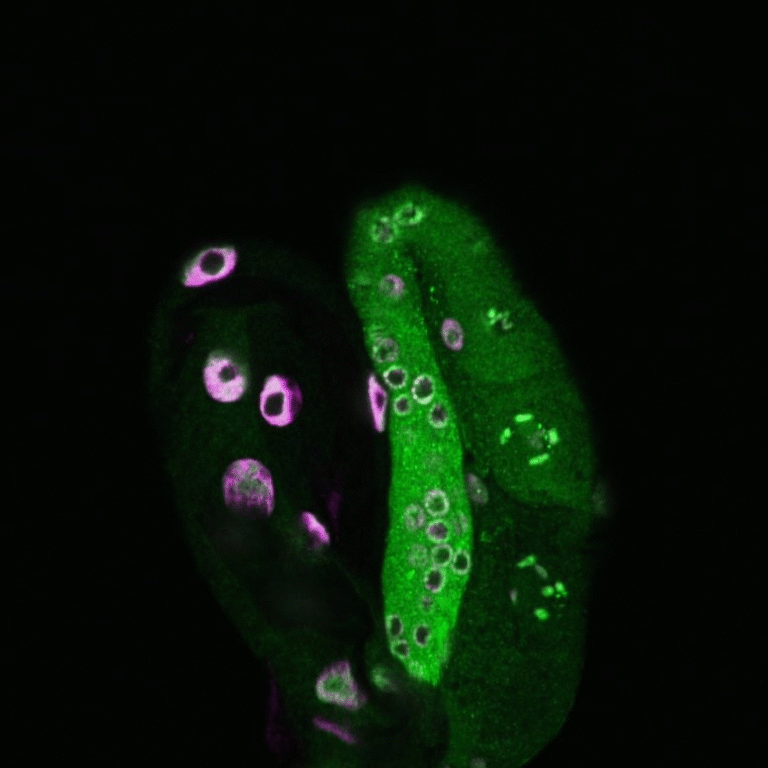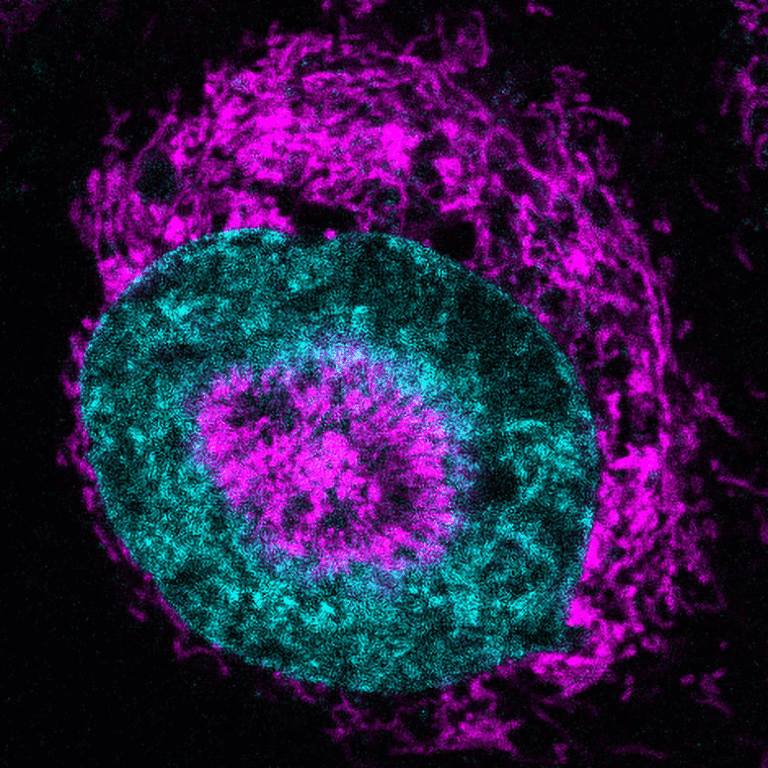New Cancer Therapy Uses Bacteria to Sneak Viruses Into Tumors and Destroy Them From Within

A team of scientists at Columbia Engineering and The Rockefeller University has unveiled a fascinating new approach to cancer treatment that uses bacteria and viruses working together to attack tumors. This breakthrough, recently published in Nature Biomedical Engineering, describes a system where tumor-seeking bacteria carry cancer-killing viruses into tumors, hiding them from the immune system and unleashing them directly where they’re needed most.
It’s a Trojan horse-style therapy, and the technology behind it is called CAPPSID — short for Coordinated Activity of Prokaryote and Picornavirus for Safe Intracellular Delivery. The idea combines two of nature’s most powerful microscopic entities — bacteria and viruses — to create a cooperative attack on cancer that neither could achieve alone.
The Core Idea: Bacteria + Virus = Double Attack
Traditional cancer therapies like chemotherapy or radiation can harm healthy cells and often fail to fully eliminate tumors. More modern biological therapies, such as oncolytic viruses, are designed to infect and kill cancer cells while sparing normal ones. However, these virus-based treatments face a big hurdle — our immune systems.
If a patient already has antibodies from past infections or vaccinations, those antibodies can neutralize the therapeutic virus before it ever reaches a tumor. That’s where bacteria enter the picture.
In this new method, the virus is hidden inside a bacterium — specifically, a modified strain of Salmonella typhimurium, a species known for its ability to seek out the low-oxygen, nutrient-rich environments found deep within tumors. This bacterium becomes the virus’s delivery vehicle, effectively cloaking it from the body’s immune defenses.
Once the bacteria reach the tumor site, they invade cancer cells, burst open, and release the viral genome inside the tumor’s interior. The virus then begins to replicate, spreading among tumor cells and destroying them from within.
This two-step biological partnership allows for something that was previously impossible: viruses can now bypass the immune system and still spread effectively inside tumors.
Why the Immune Cloak Matters
One of the biggest challenges in oncolytic virus therapy has always been pre-existing immunity. If the immune system recognizes the virus as an invader — which it often does, since many oncolytic viruses are based on common viruses — antibodies can quickly neutralize it.
By using bacteria as a “cloak,” the Columbia team found a way to smuggle the virus into tumors, letting it operate stealthily. The bacteria shield the virus from circulating antibodies, acting as a biological delivery truck that sneaks it right to the tumor’s door.
This strategy means the therapy could still work even in patients who have immunity to the therapeutic virus — a major limitation for many existing viral cancer treatments.
Engineering the Perfect Partnership
The Columbia researchers didn’t just toss bacteria and viruses together. They carefully engineered both to work hand-in-hand.
The bacterial component, Salmonella typhimurium, naturally gravitates toward tumor environments. The team further programmed it to carry the viral RNA genome of Senecavirus A (SVA), a picornavirus known for infecting and destroying cancer cells.
Once the bacteria reach the tumor, they lyse (break apart), releasing the viral RNA into cancer cells. The virus then begins to replicate, spreading locally from cell to cell.
But there’s a catch — and this is where safety engineering comes in. The virus has been genetically modified to depend on a bacterial enzyme, a protease, that it needs to form complete viral particles. Without that protease, the virus cannot mature or spread.
Since this enzyme only exists in the engineered bacteria — which themselves stay confined to the tumor — the virus’s spread is self-limiting. Even if some viral particles escape the tumor, they remain harmless in healthy tissues.
In other words, the virus is programmed to only work inside the tumor, where the bacteria are present. This clever dependency adds a crucial safety layer, ensuring the therapy doesn’t trigger unintended infections elsewhere in the body.
The Study Results: Promising Signs in Mice
In the study, the researchers tested their CAPPSID system in mouse models bearing solid tumors. These tests included both normal mice and ones with pre-existing immunity to Senecavirus A — the type of scenario where standard viral therapies would typically fail.
In both cases, the new approach worked. The bacteria successfully delivered the virus, which then spread inside the tumors and destroyed cancer cells. Some mice showed major tumor regression and even complete clearance of tumors.
The team observed that viral replication occurred specifically in the tumor regions where bacteria were present, confirming that the system’s built-in safety mechanism functioned as intended. No uncontrolled viral spread was detected outside the tumor environment.
These preclinical results mark one of the first successful examples of deliberately engineering bacteria and viruses to cooperate as a single therapeutic system against cancer.
Safety: A Priority from the Start
Live bacteria and viruses are both powerful but potentially risky tools in medicine. For this reason, the Columbia researchers placed safety at the center of their design.
By linking viral replication to a bacterial enzyme, they created what’s called a synthetic dependence between the two organisms. The virus literally cannot reproduce or spread without the help of its bacterial partner.
This safeguard ensures that, even if a virus were to leak out of the tumor site, it would remain inert. The bacteria themselves are engineered strains that are known to be safe in laboratory and clinical settings, and they remain localized in the tumor microenvironment.
This type of control system could set a new standard for bioengineered cancer therapies, making them safer and more precise than ever before.
Beyond the Lab: What’s Next for CAPPSID
The researchers, led by Tal Danino (Columbia Engineering) and Charles M. Rice (The Rockefeller University), are already planning the next steps. They are testing CAPPSID with different viruses, bacterial strains, and cancer types to see how flexible and adaptable the platform can be.
The goal is to build a toolkit of bacterial-virus combinations that can be tuned for specific cancers or even customized for individual patients. They are also exploring how to combine this system with other modern therapies, such as immunotherapy or checkpoint inhibitors, to further enhance its effectiveness.
Clinical translation efforts are reportedly underway, but human trials will require extensive safety testing first. Live-microbe therapies must pass rigorous regulatory reviews, especially since they involve engineered organisms that replicate inside the body.
The Bigger Picture: Bacteria and Viruses as Cancer Fighters
This study fits into a growing field of research called synthetic biology, where scientists design living organisms to perform useful medical tasks. Using bacteria or viruses to fight cancer isn’t entirely new — but combining them is.
Bacterial cancer therapy has been studied for decades. Some bacteria naturally accumulate in tumors due to the low oxygen and suppressed immune activity found there. Scientists have experimented with engineering these bacteria to release toxins, stimulate the immune system, or deliver drugs directly into tumors.
Meanwhile, oncolytic viruses have gained attention for their ability to selectively infect and destroy cancer cells. In fact, the FDA has already approved one such therapy: T-VEC (talimogene laherparepvec), based on a modified herpes simplex virus, used to treat certain types of melanoma.
However, both approaches have limits on their own. Bacteria often struggle to fully penetrate large tumors or metastases, and viruses are easily blocked by the immune system.
By merging these two microbial tools, the CAPPSID system overcomes both weaknesses — creating a cooperative biological alliance that is smarter, stealthier, and more targeted.
Challenges Ahead
While the early results are exciting, it’s important to remember that this therapy is still in the animal testing stage. Translating it safely to humans will take years of additional research.
There are still unanswered questions:
- How will the human immune system respond to both the bacteria and the virus working together?
- Will the engineered organisms behave predictably in the complex environment of the human body?
- Can the therapy be scaled up and manufactured consistently for clinical use?
Moreover, while the bacterial-virus dependence system is a strong safety feature, regulators will likely require exhaustive evidence that no escape or mutation could make the virus self-sufficient.
Still, the concept opens an entirely new direction in cancer research — one where multiple engineered organisms work together as living medicines.
A Glimpse Into the Future of Cancer Therapy
The CAPPSID project showcases how far synthetic biology has come. Just a decade ago, the idea of engineering two different microbes to coordinate inside the human body would have seemed like science fiction.
Now, it’s a working reality in the lab. If this system proves safe and effective in humans, it could redefine how we think about cancer treatment — not just as chemical or genetic therapy, but as cooperative biology, where different living systems collaborate to heal the body.
This discovery may also inspire future “multi-microbe” systems — combinations of engineered bacteria, viruses, and even immune cells designed to work as modular, programmable therapies. It’s a vision of medicine that feels both futuristic and incredibly natural at the same time.
Research Reference:
Engineered bacteria launch and control an oncolytic virus – Nature Biomedical Engineering (2025)





